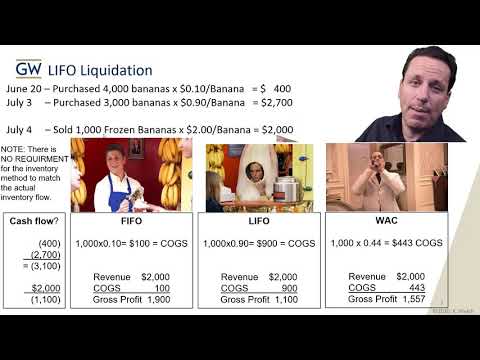
Stockholders’ equity might include common stock, paid-in capital, retained earnings, and treasury stock. The share capital method is sometimes known as the investor’s equation. The above formula sums the retained earnings of the business and the share capital and subtracts the treasury shares. Retained earnings are the sum of the company’s cumulative earnings after paying dividends, and it appears in the shareholders’ equity section in the balance sheet. There are several types of equity accounts that combine to make up total shareholders’ equity.
Equity is used as capital raised by a company, which is then used to purchase assets, invest in projects, and fund operations. A firm typically can raise capital by issuing debt (in the form of a loan or via bonds) or equity (by selling stock). Investors usually seek out equity investments as it provides a greater opportunity to share in the profits and growth of a firm. Stockholders’ equity is the value of a firm’s assets after all liabilities are subtracted.
What are equity investments?
Stash does not provide personalized financial planning to investors, such as estate, tax, or retirement planning. Investment advisory services are only provided to investors who become Stash manufacturer negative confirmation balance report instructions Clients pursuant to a written Advisory Agreement. Equity therefore includes share capital contributed by the shareholders along with any profits or surpluses retained in the entity.

This is what the owners take home in the event of liquidation of the entity. SE is a number that stock investors and analysts look at when they’re evaluating a company’s overall financial health. It helps them to judge the quality of the company’s financial ratios, providing them with the tools to make better investment decisions. Unlike example #1, where we paid for an increase in the company’s assets with equity, here we’ve paid for it with debt. This formula can give a slightly more accurate picture of what shareholders may expect if forced/decided to liquidate a company or exit.
How to Calculate Stockholders’ Equity
For a sole proprietorship or partnership, equity is usually called “owners equity” on the balance sheet. If the company was liquidated, and its assets turned into $3 million, you would use some of that money to pay off the $1.2 million in liabilities. You can look for and calculate the equity in everything from basic items to business enterprises and stock portfolios.
Society Notebook: Maine Black Excellence Awards honor … – Press Herald
Society Notebook: Maine Black Excellence Awards honor ….
Posted: Sun, 03 Sep 2023 08:00:08 GMT [source]
If the company needs to be formally valued, it will often hire professionals such as investment bankers, accounting firms (valuations group), or boutique valuation firms to perform a thorough analysis. The number for shareholders’ equity is calculated simply as total company assets minus total company liabilities. Looking at the same period one year earlier, we can see that the year-over-year (YOY) change in equity was a decrease of $25.15 billion.
Example of Shareholders’ Equity
You can calculate this by subtracting the total assets from the total liabilities. These figures can all be found on a company’s balance sheet for a company. For a homeowner, equity would be the value of the home less any outstanding mortgage debt or liens. In the case of acquisition, it is the value of company sales minus any liabilities owed by the company not transferred with the sale. Treasury Stock – Sometimes corporations want to downsize or eliminate investors by purchasing company from shareholders.
- Most companies keep a significant share of their profits to reinvest and help run the company operations.
- Interviewers should be made aware that, for example, individuals on the autism spectrum might not be able to maintain eye contact, while candidates with ADHD may fidget.
- Separately managed accounts (SMAs) give investors the opportunity to build equity portfolios through a personalized and flexible approach.
- The statement of owner’s equity reports the changes in company equity.
Venture capitalists (VCs) provide most private equity financing in return for an early minority stake. Sometimes, a venture capitalist will take a seat on the board of directors for its portfolio companies, ensuring an active role in guiding the company. Venture capitalists look to hit big early on and exit investments within five to seven years. An LBO is one of the most common types of private equity financing and might occur as a company matures. Many view stockholders’ equity as representing a company’s net assets—its net value, so to speak, would be the amount shareholders would receive if the company liquidated all of its assets and repaid all of its debts.
How to calculate stockholders’ equity
Costs like payroll, utilities, and rent are necessary for business to operate. Expenses are contra equity accounts with debit balances and reduce equity. Equity equals the assets that are left over after the debts are paid. If a company’s shareholder equity remains negative, it is considered to be balance sheet insolvency.
- Understanding and analyzing key financial statements like the balance sheet, income statement, and cash flow statement is critical to painting a clear picture of a business’s past, present, and future performance.
- Negative brand equity is rare and can occur because of bad publicity, such as a product recall or a disaster.
- If the dividend is not paid in one year, then it will accumulate until paid off.
- If you aren’t aware, current assets are any assets you can convert to cash within one fiscal year.
If an equity investment rises in value, the investor would receive the monetary difference if they sold their shares, or if the company’s assets are liquidated and all its obligations are met. Equities can strengthen a portfolio’s asset allocation by adding diversification. If it reads positive, the company has enough assets to cover its liabilities. If negative, the company’s liabilities exceed its assets; if prolonged, it amounts to balance sheet insolvency.
Equity
You can look to this important piece of information for a snapshot of your current investment’s overall health or in vetting a future investment. Shareholders’ equity refers to the owners’ claim on the assets of a company after debts have been settled. The first is the money invested in the company through common or preferred shares and other investments made after the initial payment. The second is the retained earnings, which includes net earnings that have not been distributed to shareholders over the years. All the information required to compute shareholders’ equity is available on a company’s balance sheet. Current assets are assets that can be converted to cash within a year (e.g., cash, accounts receivable, inventory).
Noncurrent or long-term assets you can’t convert into cash in the same timeframe, such as patents, property and plant and equipment (PPE). While retained earnings are an essential part of shareholders’ equity (as the current percentage of net earnings is not given to shareholders as dividends), they should not be confused with liquid assets like cash. You can use several years of retained earnings for assets, expenses or other purposes to grow a business.
Example of Shareholder Equity
At full parity, though, Latinos could spend an extra $660 billion annually, and Latino businesses could generate trillions in revenue and support millions of new jobs, while also creating new flows of generational wealth. Addressing barriers faced by Latinos in America could make the economy more robust for all. They are underrepresented in higher-wage industries and executive roles, and they face lower odds for advancement.